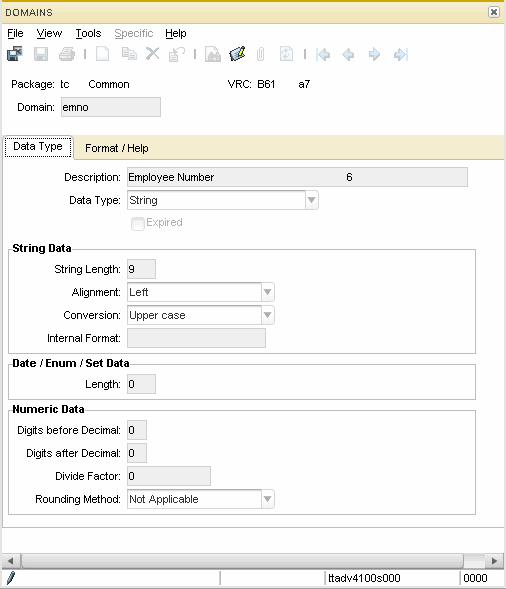DomainsDomains define common information about data such as data type, length, alignment, valid ranges, display format, and capitalization rules. Domains insure consistent data types for fields and variables. Domains can be linked to table fields, form fields, and program variables. The following table shows some domains of the tc (Common) package.
The following figure shows the details of the tc emno (Employee
Number) domain.  Domain properties Example Domains of type Enumerated or Set have constants with language-dependent descriptions. Each constant has three characteristics:
For example: the tc styp (Schedule type) domain has the following constants:
To create domains You can create domains in the Domains (ttadv4500m000) session.
| |||||||||||||||||||||||||||||||||||||||